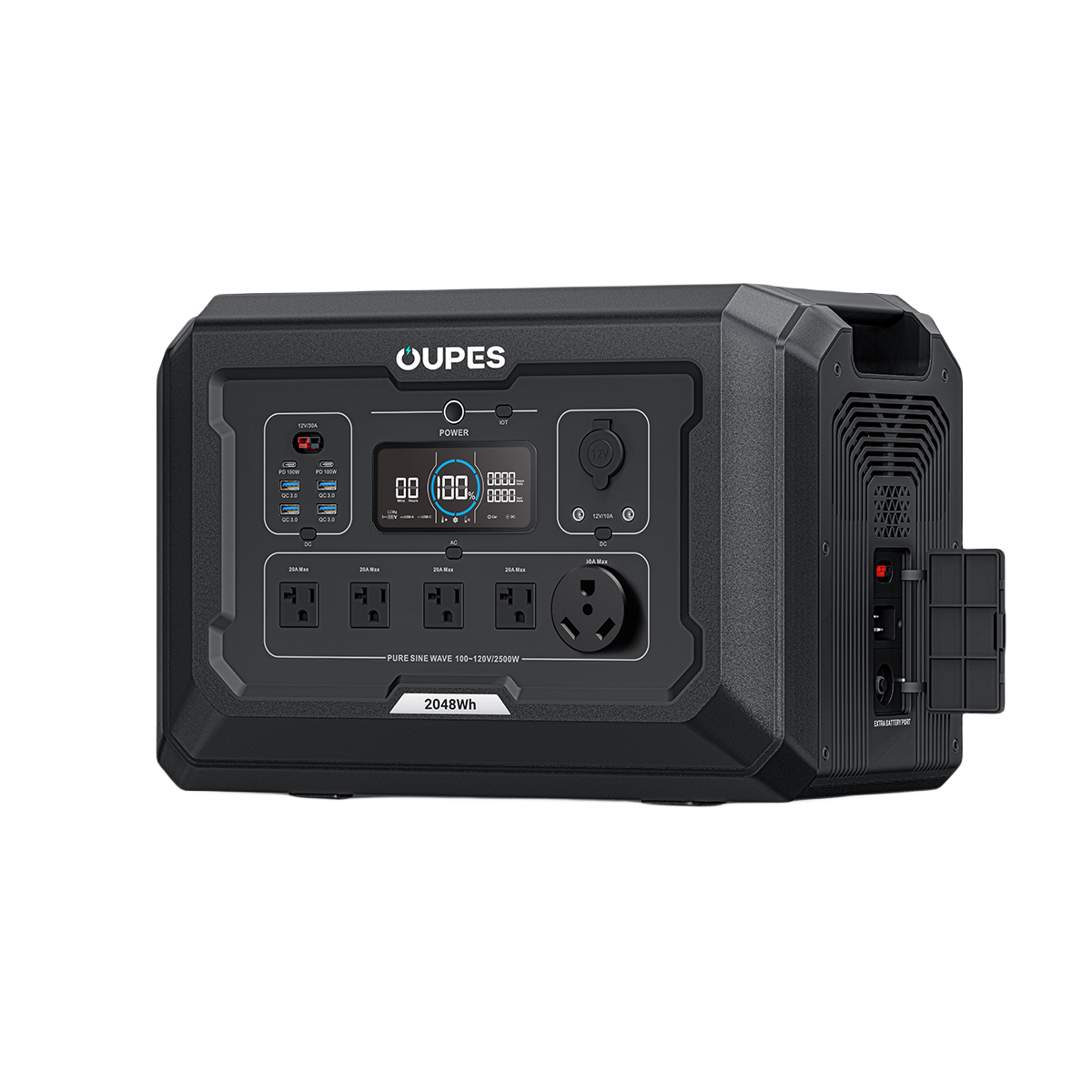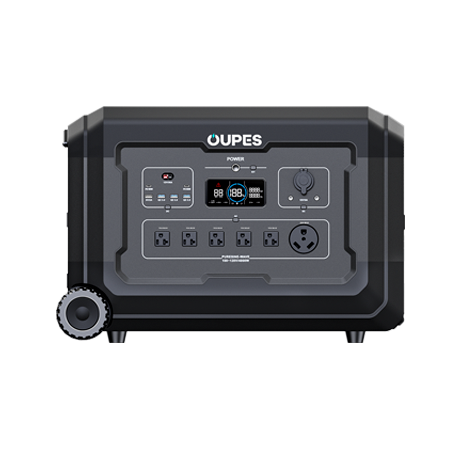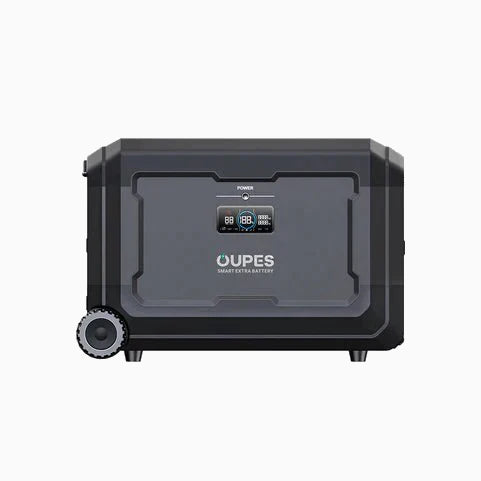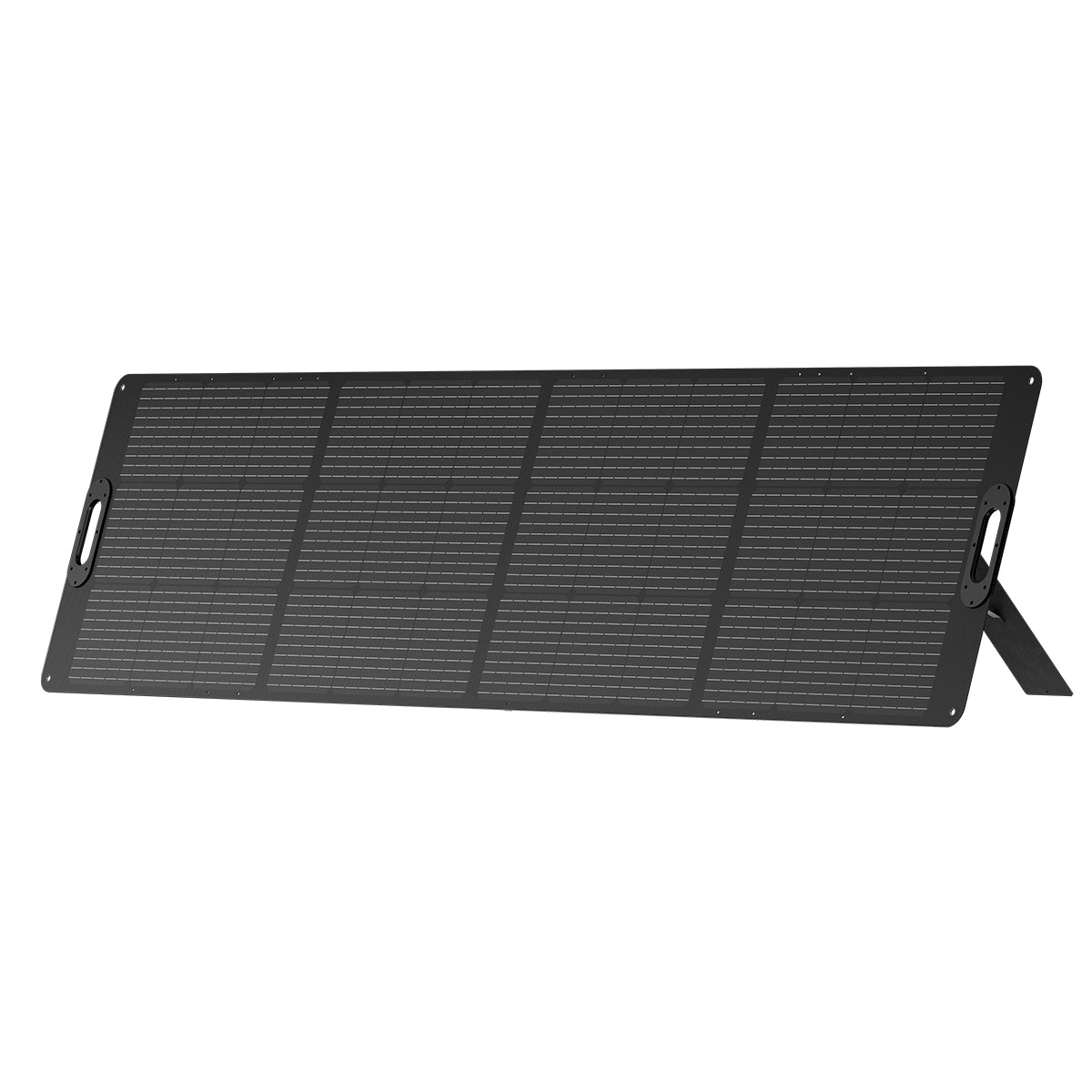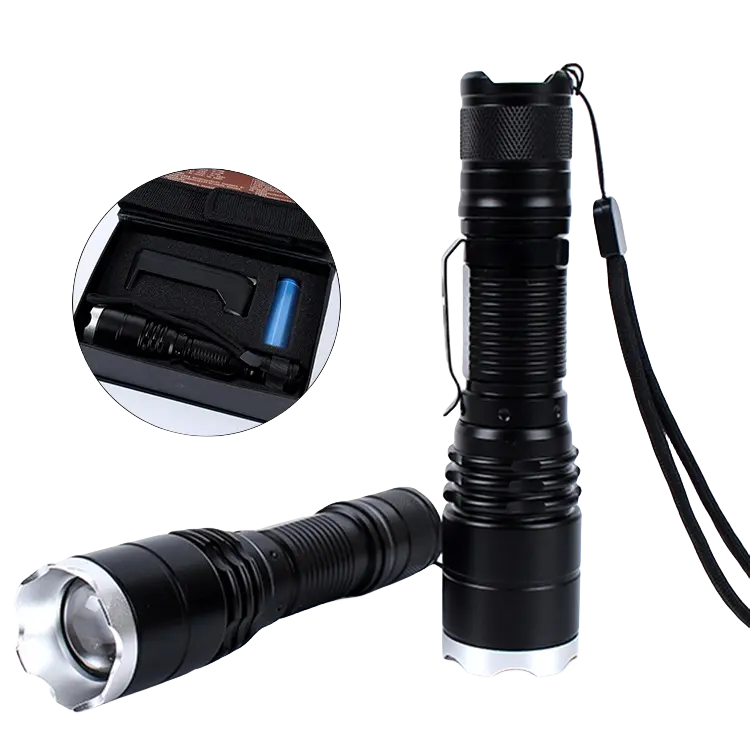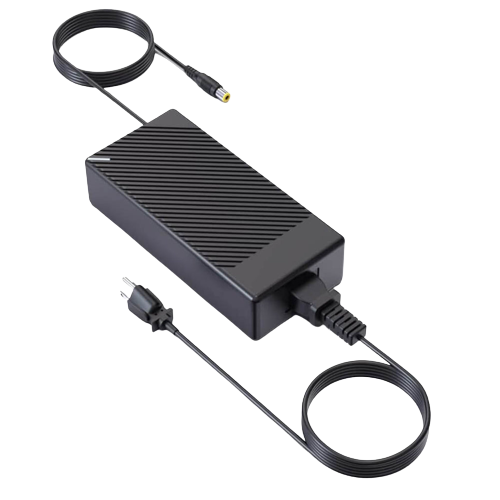What Is a LiFePO4 Battery?
LiFePO4 power stations, a term often unfamiliar to many, refer to lithium iron phosphate, or LiFePO4 (LFP), which stands out as a pioneering rechargeable battery technology. Its acclaim stems from its robust safety profile, enduring lifespan, and exceptional efficiency.
These LFP accumulators find their niche in a plethora of domains, ranging from sequestered energy repositories, auxiliary power architectures, and mobile electronic devices, to the propulsion units of electric vehicles.
The realm of solar and secluded power networks predominantly embraces lithium-ion cells, attributing their prevalence to a plethora of merits overshadowing traditional lead-acid battery frameworks. These batteries, contingent on their deployment patterns, necessitate minimal upkeep and demonstrate operational resilience extending beyond a decade.
LiFePO4 presents itself as a relatively nascent contender, swiftly ascending to the zenith of lithium battery technology. This ascent is attributed to its plethora of advantages, a direct consequence of its distinct molecular constitution. Deviating from conventional lithium-ion batteries, LiFePO4 cells eschew the incorporation of nickel and cobalt.
Continue perusing to comprehend why LiFePO4 batteries stand as the paramount choice for electrical energy storage in various consumer applications, and explore the spectrum of LFP-powered auxiliary and remote power solutions available for your utilization.
What Type of Battery Is a LiFePO4?
Lithium iron phosphate (LiFePO4) cells, a distinct variant within the lithium-ion battery family, present numerous superiorities over their conventional counterparts. These enhancements encompass an extended operational lifespan, augmented security measures, increased discharge proficiency, and a reduction in ecological and humanitarian repercussions.
The high power density of LiFePO4 cells is noteworthy. Capable of dispensing elevated currents in ephemeral bursts, they are optimally suited for scenarios demanding instantaneous surges of intense power.
In realms such as domestic appliance energization, electric motor propulsion, and other power-hungry apparatuses, LFP cells excel. Additionally, they are swiftly becoming the preferred choice over lead acid and orthodox lithium-ion solar batteries in comprehensive power solutions like the OUPES’ Solar Generator Kit, which incorporates LiFePO4 power stations. These kits are revolutionizing power supply for recreational vehicles, compact abodes, and remote constructions.
Benefits of LiFePO4 Batteries

LiFePO4 batteries eclipse traditional energy storage solutions such as li-ion, lead-acid, and AGM in numerous aspects.
The merits of LiFePO4 are manifold and include:
- Wide Operating Temperature Range
- Long Lifespan
- High Energy Density
- Safe Operation
- Low Self-Discharge
- Solar Panel Compatibility
- Does Not Require Cobalt
Temperature Range
LiFePO4 accumulators exhibit robust performance across an extensive thermal spectrum. Research elucidates the profound influence of ambient temperature on lithium-ion accumulators, prompting manufacturers to explore diverse strategies to mitigate this effect.
Emerging as a panacea to these thermal challenges, LiFePO4 cells demonstrate remarkable operational efficacy in conditions ranging from a frigid -4°F (-20°C) to a sweltering 140°F (60°C). Save for those residing in exceptionally polar realms, utilizing a LiFePO4 accumulator throughout the year is feasible.
In contrast, standard lithium-ion cells exhibit optimal functionality within a more constricted thermal window, from 32°F (0°C) to 113°F (45°C). Deviating from this specified range not only precipitates a drastic decline in performance but also poses a risk of irreparable harm to the accumulator.
Long Lifespan
In contrast to its lithium-ion and lead-acid counterparts, LiFePO4 boasts a markedly extended lifespan. LFP batteries demonstrate an endurance to endure between 2,500 to 5,000 charging and discharging cycles before they exhibit a diminution of approximately 20% in their pristine capacity. Complex models such as power units within OUPES Portable Power Stations have a longer service life, which can be used for 3500+ cycles at 80% depth of discharge.
Each cycle encapsulates the process of depleting and subsequently replenishing a battery's charge. Conversely, a conventional lead-acid battery often encounters a precipitous falloff in both capacity and efficiency after merely a few hundred cycles. This precipitates more habitual replacements, a drain on both the proprietor’s resources and time, not to mention an aggravating contributor to the accumulation of electronic waste.
Moreover, lead-acid batteries necessitate substantial upkeep for effective operation.
High Energy Density
LiFePO4 accumulators manifest a remarkable volumetric energy capacity, signifying their prowess in harboring an augmented quantum of vigor within a diminished expanse compared to their counterparts in the battery realm. This attribute is particularly advantageous for compact solar dynamos, as it renders them both more featherweight and less voluminous than their lead-acid and conventional lithium-ion brethren.
This amplified energy capacity is progressively cementing LiFePO4's position as the preferred selection amongst electric vehicle fabricators. The reason is their ability to stockpile an elevated amount of energy whilst occupying a reduced fraction of precious space.
Exemplifying this heightened energy capacity, portable power stations such as the OUPES 1800 Portable Power Station stand out. This device is capable of energizing most high-consumption apparatuses whilst maintaining a mere weight of approximately 33 lbs.
Safety
LiFePO4 accumulators, a subclass of lithium-ion energy cells, manifest an enhanced threshold for thermal resilience, significantly mitigating the perils of overheating and thermal excursion. Their inherent stability renders them exceptionally suited for domestic energy applications, eclipsing the safety parameters typically associated with their lithium-ion counterparts.
Furthermore, these cells are devoid of the propensity to emit noxious vapors, a notorious trait of lead-acid batteries. This characteristic permits the secure placement and utilization of LiFePO4 accumulators in confined environments, such as garages or storage sheds, albeit retaining a recommendation for some degree of air circulation.
Low Self-Discharge

LiFePO4 accumulators exhibit negligible self-diminution in charge, steadfast in their stored energy over extended durations of non-utilization. They emerge as quintessential for intermittent exigencies in power backup systems.
This device proves invaluable during sporadic power disruptions or for augmenting existing power infrastructures temporarily. The robustness of LiFePO4 power stations is evident, as they remain unassailable and primed for activation even after protracted periods of dormancy.
Support Solar Charging
Certain producers employing LiFePO4 power station accumulators in their nomadic energy hubs facilitate heliacal recharging through supplementary photovoltaic modules. These accumulators, when integrated with a substantial photovoltaic array, are capable of energizing an entire domicile off the grid.
Environmental Impact
For an extended period, the ecological ramifications served as the primary contention against the adoption of lithium-ion accumulators. In contrast to the near-total reclamation achievable with lead-acid energy cells, lithium-ion counterparts historically lacked similar recycling efficiency.
Nevertheless, a breakthrough has emerged, with certain enterprises mastering the art of repurposing lithium cells, heralding transformative prospects within the sector. The integration of LiFePO4 batteries in solar generators notably amplifies this environmental conservation, especially when deployed in photovoltaic configurations.
More Ethically Sourced Materials
Cobalt, an indispensable component in conventional lithium-ion accumulators, predominantly hails from the Democratic Republic of Congo, accounting for over seventy percent of global reserves.
In the DRC, the extraction conditions are egregiously inhumane, often involving the exploitation of minors, earning cobalt the notorious moniker, “the blood diamond of the energy storage world.”
LiFePO4 accumulators stand apart as they are devoid of cobalt.
Frequently Asked Questions

What Is the Life Expectancy of LiFePO4 Batteries?
The life expectancy of LiFePO4 batteries hovers within the range of 2,500 to 5,000 cycles when subjected to an 80% depth of discharge. It's essential to acknowledge that all batteries undergo a gradual erosion of efficiency and capacity with time.
However, LiFePO4 batteries distinguish themselves by delivering the most extensive operational longevity among all available consumer battery chemistries.
Are LiFePO4 Batteries Good for Solar?
In the realm of solar applications, LiFePO4 batteries have garnered considerable acclaim due to their remarkable intricacy in energy storage, their propensity for minimal self-discharge, and their enduring cycle life.
Furthermore, these batteries exhibit an extraordinary affinity for harnessing solar energy, rendering them a superlative choice for off-grid or auxiliary power systems that harness solar panels to engender solar vitality.
Final Thoughts

LiFePO4 power stations have emerged as the foremost exponent of lithium battery technology, particularly in the realms of backup power and solar systems. In the contemporary landscape, LiFePO4 batteries assert their dominance, contributing to the energy foundation of an impressive 31% of electric vehicles (EVs). Renowned industry titans such as Tesla and China's BYD are progressively embracing the utilization of LiFePO4 (LFP).
LiFePO4 batteries offer a multitude of advantages, outshining their counterparts in various battery chemistries. These merits encompass an extended operational life, elevated energy density, reduced self-discharge rates, and an unparalleled commitment to safety.
Enterprises of note, such as OUPES, have seamlessly integrated LiFePO4 power stations into their repertoire to bolster backup power systems and solar generators, bearing testimony to the remarkable strides taken in sustainable energy practices.
Embark on a journey to explore OUPES's diversified array of solar generators and power stations, all impeccably fortified with LiFePO4 battery technology. These offerings exemplify the quintessential choice for those in search of a dependable, low-maintenance, and environmentally conscious energy storage solution.

